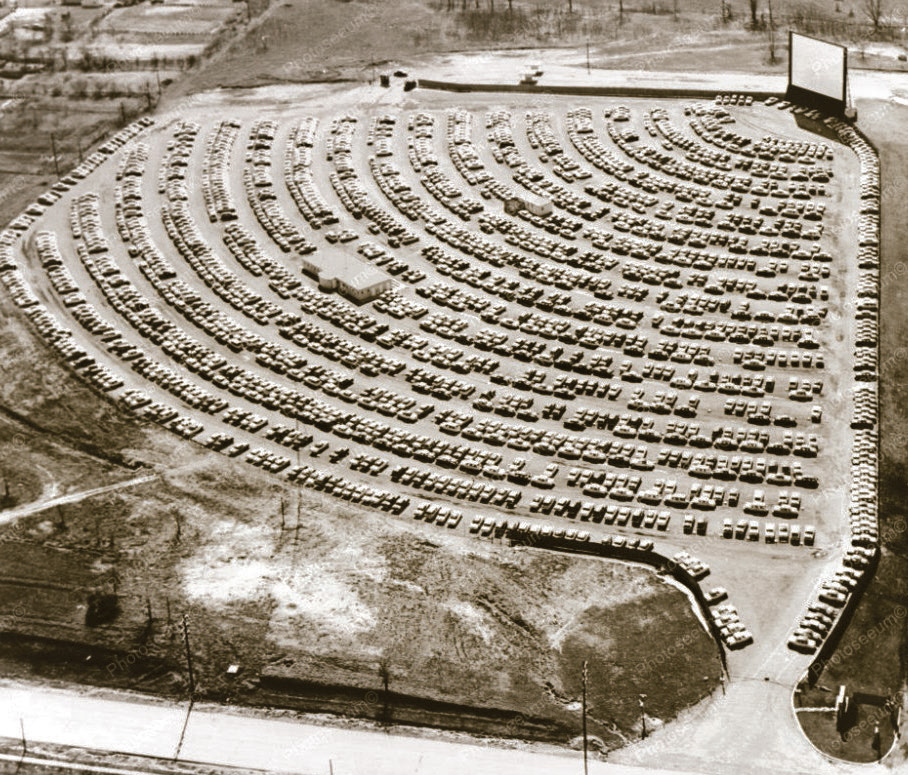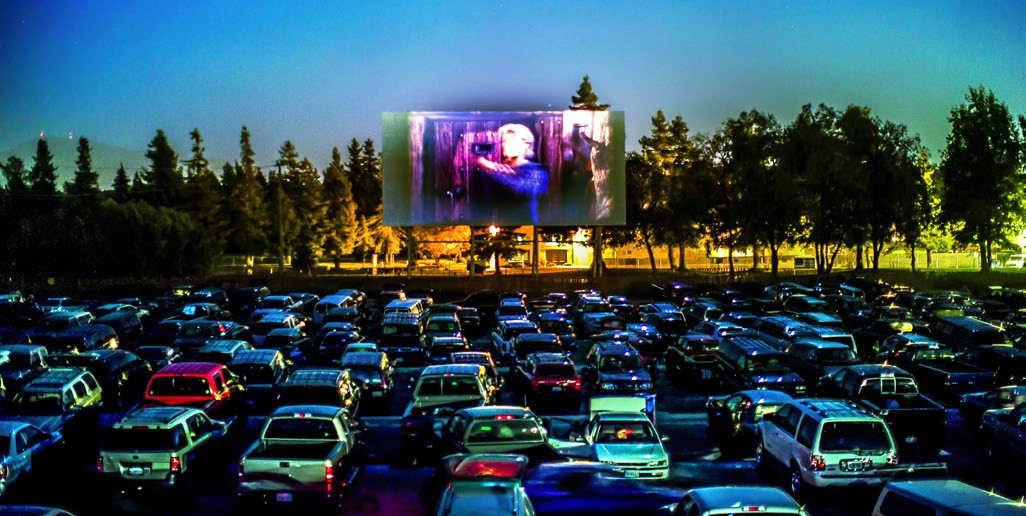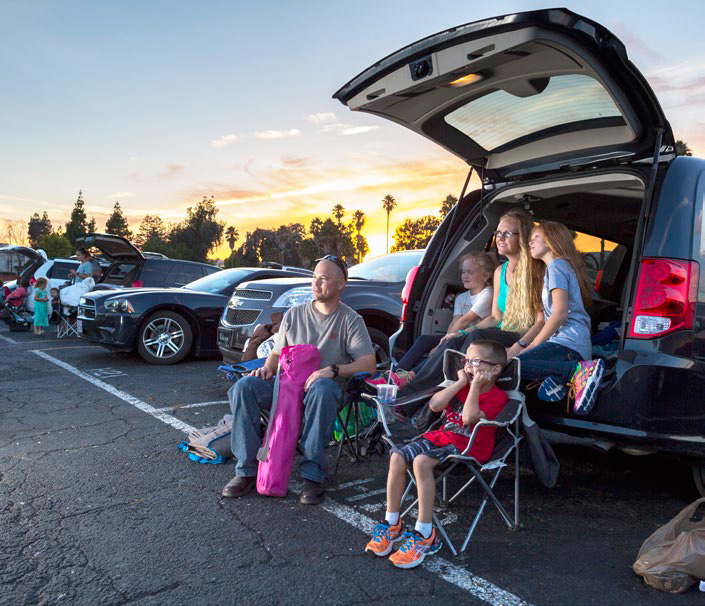Showtime in the Ozone - Page 2
 |
 |
|
|
 |
 |
 |
|
|
Birth of an ozoner nation
When invention of the drive-in cinema is attributed to chemical magnate Richard M. Hollingshead, a natural question arises given that movie projectors, screens, and parking lots had all been around for decades by 1933: what exactly did he invent?
The answer is that the Jersey man devised and patented the iconic nose-up parking stall that facilitates watching a huge, distant screen without the experience ending as a proverbial pain in the neck.
After word got out about Hollingshead's novel, new form of Depression-era entertainment, Hollywood was quick to give it a screen test, so to speak.
The Pico Drive-In was California's first and the nation's fourth drive-in theater when it opened at Pico and Westwood boulevards in Los Angeles in September 1934. A few years later the operation was relocated, and some sources say that, under the Pico's new identity as the Olympic Drive-In Theatre, it became one of the first racially integrated drive-ins in the country.
It's somewhat astounding to consider how popular drive-ins became by the late 1950s. At their peak there were more than 4,000 throughout the country, or an average of 80-plus per state. According to Driveinmovie.com, "While the number of operating drive-ins in most states had peaked in the late 1950s, the number of drive-ins in California kept climbing through the 1960s, with more than 220 in operation by the end of the decade."
From the beginning of drive-in theaters, owners throughout the country hosted a veritable circus of diversions while airing slightly surreal ads of singing, dancing snack foods. There were playgrounds, fishing holes, petting zoos, driving ranges, mini-golf courses, dance floors, beauty parlors, and laundromats.
"[Still today] it's sort of a combination of a state fair and a movie theater," observes Tony Maniscalco, vice president of marketing for Syufy Enterprises, a longtime theater owner with a string of drive-ins. "People look at the drive-in as not just a place to see a movie, but a destination."
A recent query on Facebook unearthed a flood of such reminiscences about mid-century nights at California drive-ins.
"As kids in Lemon Grove [in central San Diego County, during the 1950s], we went to the drive-in almost every Friday night," recalls Sherry Netzler Enberg, who now lives in Julian, 50 miles away.
"We took our dinner, played on the playground, or skipped around with my dad at the intermission. Then we'd fall asleep in the backseat while our parents enjoyed the rest of the movie. As teenagers, Bob and I went to the Ace Drive-In a few times in his family's old Model A [Ford] with friends in the rumble seat!"
"We went to the drive-ins all the time in Fresno. My family put us kids in our jammies and we'd take a picnic," says Jannie Dresser of Crockett. "It was a relatively inexpensive way to take the family to the movies, and Valley summers were conducive to having the windows down."
Her best teen memory of the drive-in was a bit more colorful.
"I once enjoyed 'Mary Poppins' from the swing set at a drive-in in Fresno. My boyfriend and I were not only high on the swings flying into the movie, but high on LSD!" admits Dresser. "It made for a 'supercalifragilisticexpialidocious' experience."
Then of course there was the drive-in's hard-earned reputation as a 'passion pit,' celebrated in 1973 by David Bowie's wistful ode to 'Drive-In Saturday.'
"It was one of the first venues where I got into necking. I used to take all my dates to the drive-in," Steven Rubin notes of the Victory Drive-In and others around his hometown of North Hollywood. "There was the subtle move into the backseat, to get 'more comfortable,' [that] would lead to necking. I think I got to second base a couple times."
Enberg's friend Jean Batchelder Overton remembers coastal fog regularly creeping on little cat feet into Lemon Grove's Ace Drive-In, which may have obscured the screen but was "good for making out."
Alternatively, Curtis Corlew of Antioch said fog invaded the Pleasant Hill Drive-In one night and rendered a boring kung fu movie "softer and more impressionistic. It looked beautiful." Of course, he added, "There may well be earlier drive-in tales best left untold."




